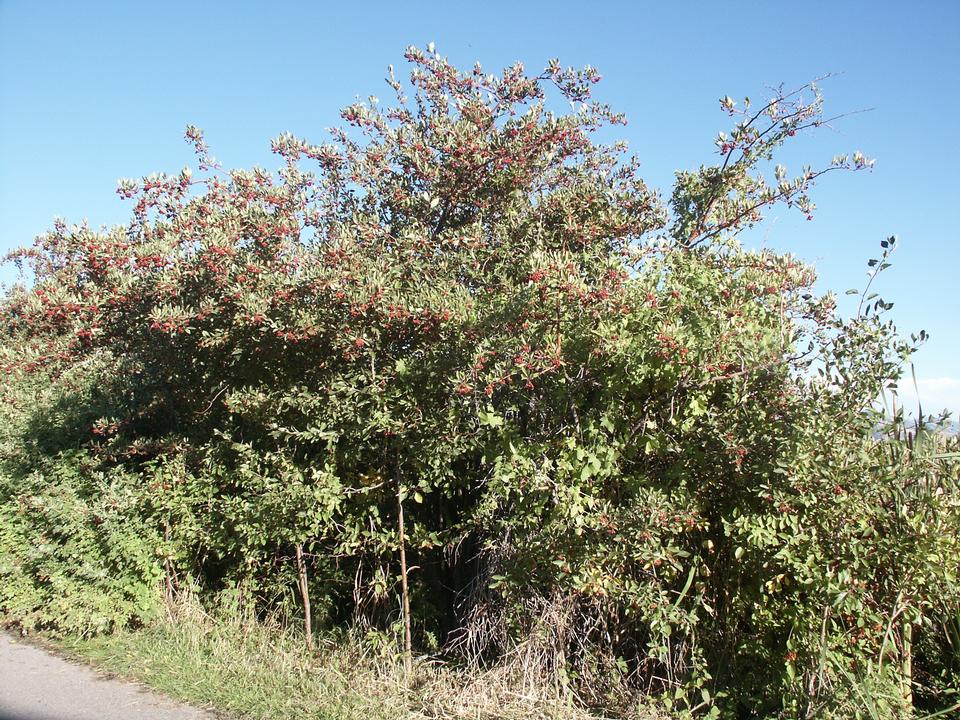Hawthorn, Black or Douglas
Crataegus douglasii
Rosaceae - Rose
Description
Leaves: Alternate; simple; oval; 1" to 3" long; deciduous; margin sharply doubly serrate or shallowly lobed, especially on the upper half; glabrous or nearly so; dark green above; petiole 1/2" long; good orange-red fall color.
Twigs/buds: Twigs more or less zig-zag; usually with stiff, sharp, 1" long thorns. Terminal bud small, round, scaly, and shiny brown; lateral buds similar.
Flowers/fruit: Flowers perfect, showy, white, 5-petalled, 1/2" to 3/4" in diameter; appear in small groups at the ends of the branches in spring. Fruit a small pome; round; 1/3" to 1/2" diameter; flesh dry and mealy, but edible; red at first and black when mature in fall, often persisting into winter.
Bark: Dark gray; scaly or slightly furrowed.
Wood: Unimportant; sapwood light colored, thick; heartwood red-brown; heavy; hard; close-grained; diffuse-porous.
General: Black hawthorn is native throughout the West and in the mountains throughout Utah. A small, slow growing tree that can be shrubby. Shade intolerant.
Landscape Use: This native hawthorn is rare in cultivated landscapes. It could be used more in naturalized landscapes and would be good for wildlife habitat plantings. Fall color is very good. Zones 2-8.
Comments & Limitations: Thorns or spines that can be dangerous; use thornless varieties if possible.
Characteristics
General
| Family | Rosaceae - Rose |
|---|---|
| Cultivar Availability | No |
| Hardiness Zone | 2-8 |
| Type | Broadleaf |
| Utah Native | Yes |
Growth
| Growth Rate | Low |
|---|---|
| Mature Height | Low |
| Longevity | Medium |
| Is Good Under Power Lines | Yes |
| Crown Shapes | Broad |
Ornamental
| Bark | No |
|---|---|
| Fall Color | Yes |
| Flowers | Yes |
| Foliage | No |
| Fruit | Yes |
Tolerance
| Shade | Low |
|---|---|
| Salt | Medium |
| Drought | High |
| Poor Drainage | Medium |
| Alkalinity | High |
| Transplanting | Medium |








